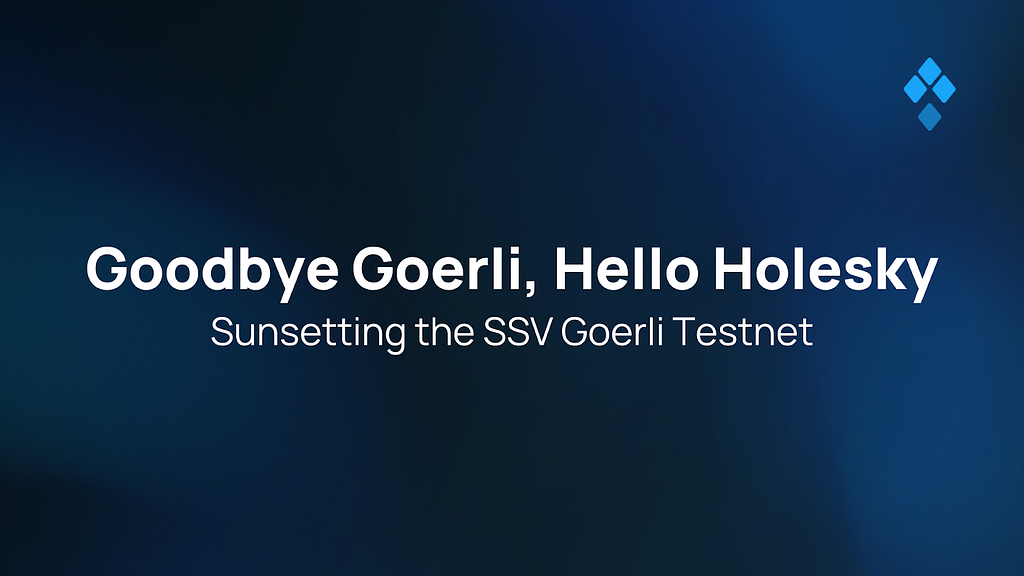Goodbye Goerli, Hello Holesky
Learn about the sunset of the SSV Goerli testnet. Developers, operators, and stakers are encouraged to make the shift. Resources are inside.

The SSV Core team has an important announcement regarding the operations of the SSV test network. The time has come to say goodbye to the SSV Goerli testnet.
The decision to sunset Goerli aligns with the guidance provided by the Ethereum Foundation, as outlined in their blog post on the topic. It marks a transition towards optimizing network operations and ensuring the ecosystem’s stability and scalability.
As of April 18th, support for the SSV Network Goerli testnet will officially sunset. This means that any mention of the Goerli network will be removed from the documentation, users will no longer be able to select it within the SSV WebApp, and operations on Goerli will not be supported by any future updates.
This change may impact many SSV Network users and community members who have been active on the Goerli deployment. But rest assured, this decision is made with the best interests of the network in mind.
In place of Goerli, we urge the SSV community to transition to the Holesky testnet. Holesky has been operational for several months now and has demonstrated robust performance. The ssv.network DAO has already deployed the necessary smart contracts on this network, ensuring seamless integration for developers and operators alike.
Holesky has also undergone rigorous testing, including the successful Dencun fork and campaigns such as the Simple DVT testnet collaboration with Lido. This track record speaks to the reliability and readiness of the Holesky testnet to support the SSV network’s operations.
Developers
If you’re a developer building on the SSV network, you are encouraged to shift your focus to Holesky for testing and deployment purposes. The documentation provides comprehensive resources to guide you through the integration process seamlessly.
Operators
For operators currently running SSV nodes on Goerli, you are encouraged to transition to Holesky. Goerli operations will shut down, meaning SSV Node operations will no longer work. The documentation offers detailed instructions on setting up nodes and registering operators on the Holesky testnet.
Stakers
If you’ve distributed validators on Goerli, they might soon start going offline. To continue testing, it’s time to embark on a new adventure by generating new Holesky validator keys and distributing them on SSV. The documentation outlines the steps for creating new keys, distributing them into keyshares, and running Distributed Key Generation ceremonies using the newly released DKG tool.
For those in need of SSV tokens for testing purposes on Holesky, the faucet is available for your convenience. Additionally, several major faucets have been established to provide testnet ETH for Holesky, including Stakely, Automata, QuickNode, Chainstack, and others.
As we bid farewell to Goerli, the ssv.network DAO welcomes the community to embrace Holesky as the SSV Network’s official testnet. This transition marks a pivotal moment in the journey toward building a stronger, more resilient ecosystem. Your continued support and cooperation is appreciated as the ssv.network navigates these changes.
For further guidance and assistance, please refer to our documentation or reach out to our community channels on Discord.
Website | Builders Hub | Network Hub | Discord | Dev Center | Documentation | GitHub